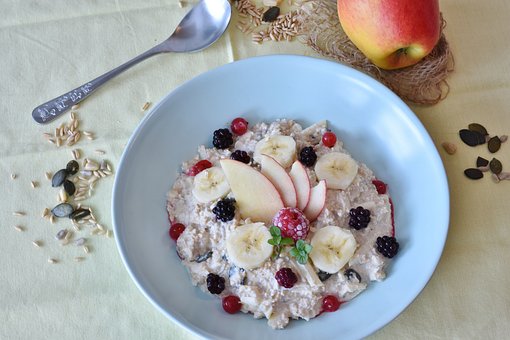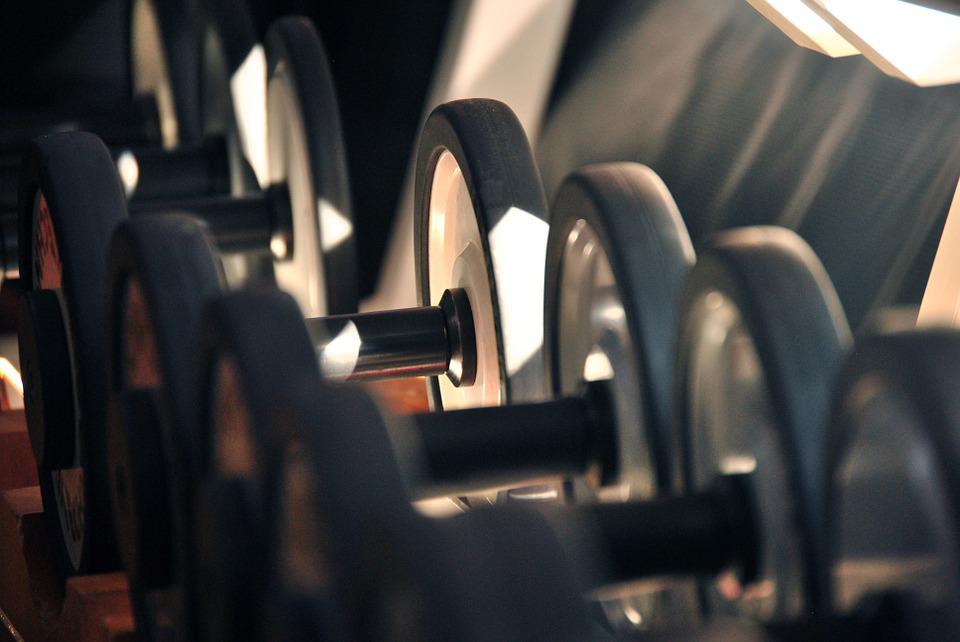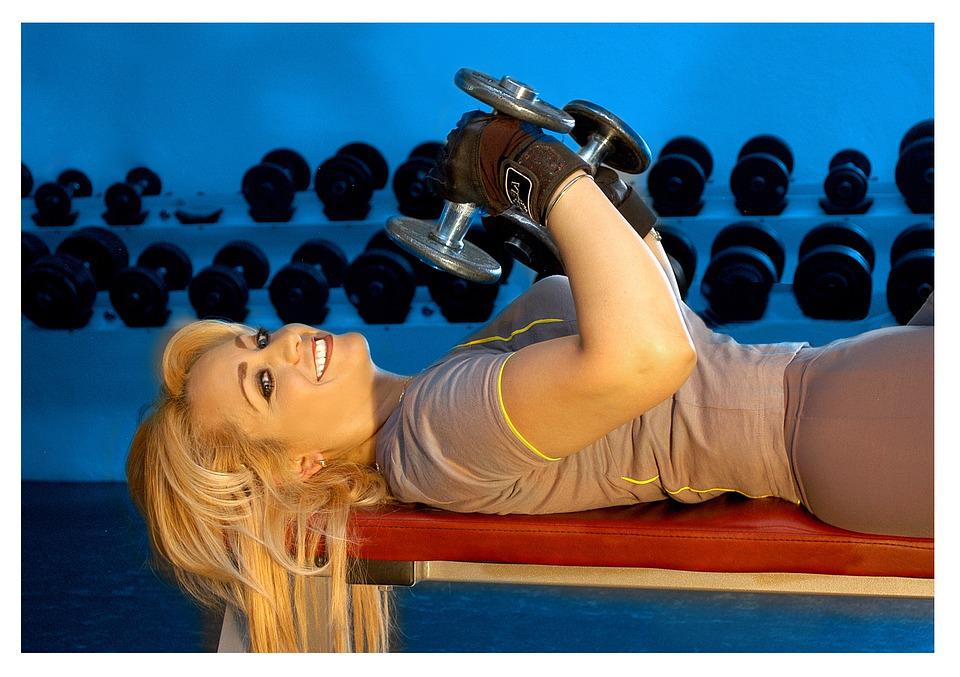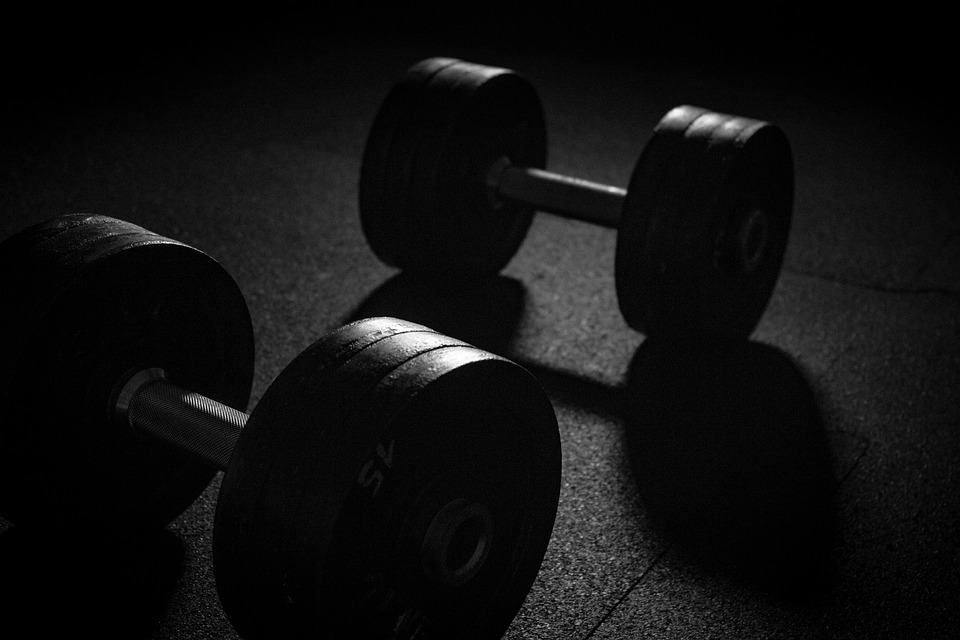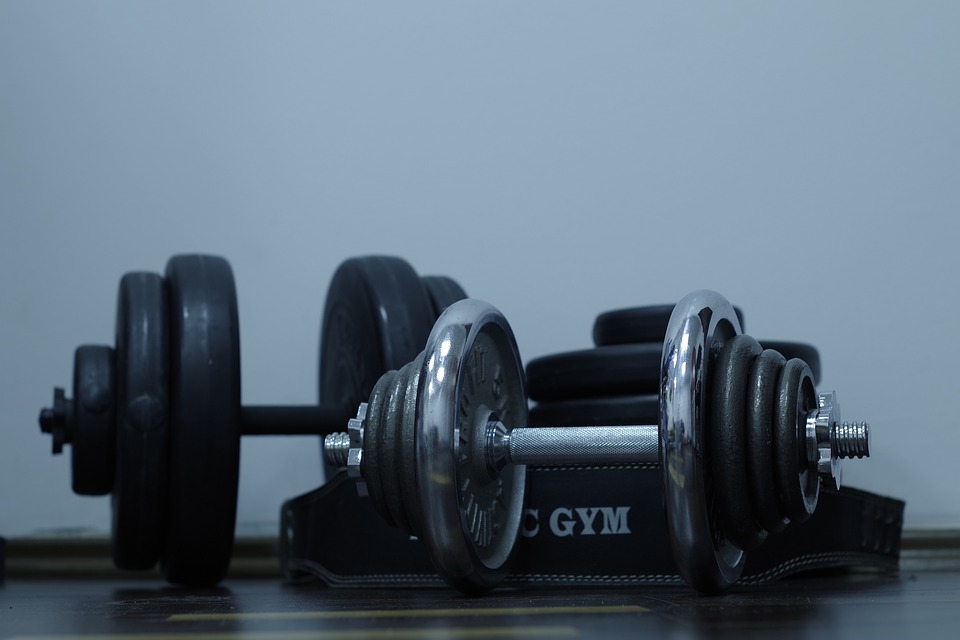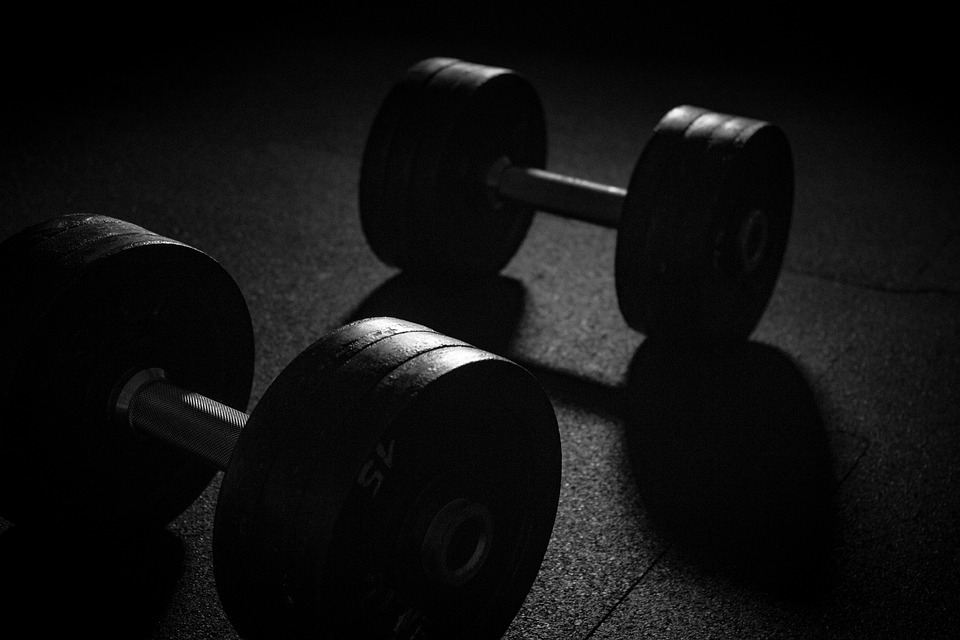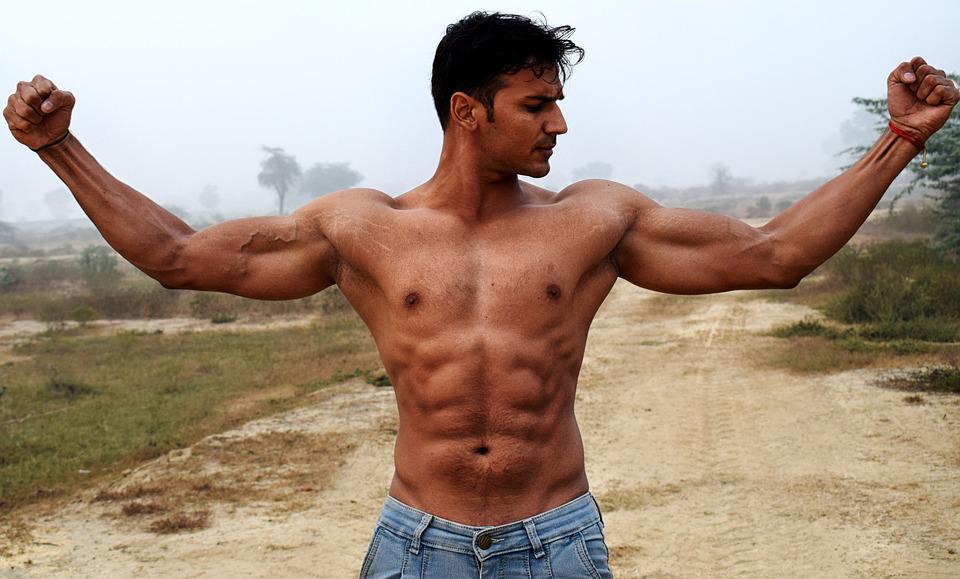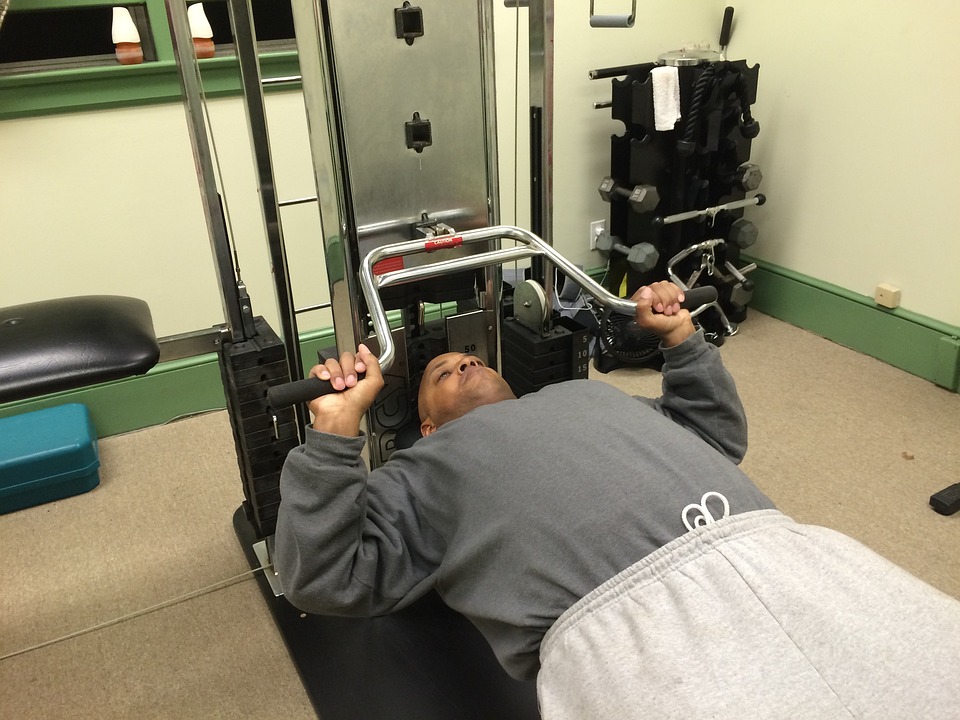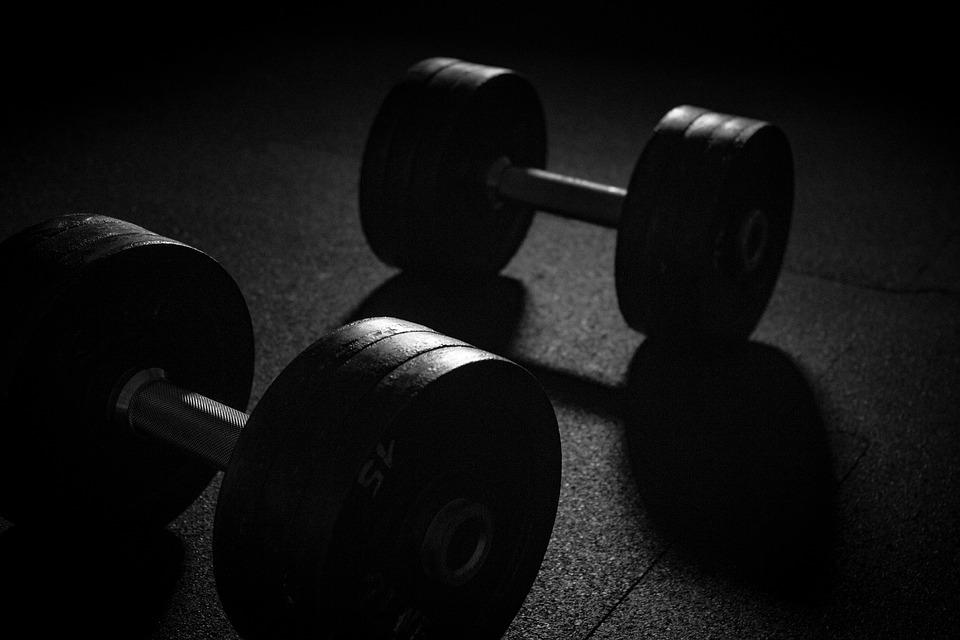
” According to PT and Multipower ambassador Ant Nyman, barbells can give your weaker side a rest while you focus on moving the weight with your stronger side. He says that this can cause your stronger side to become stronger than your weaker side, and using dumbbells can help fix this issue because each side has to work on its own.
The dumbbells being unstable will make your stabilizer muscles work harder to keep you steady while you perform the movement. This will help to prevent injury by strengthening your core and other stabilizer muscles.
Here are some of Nyman’s favorite beginner and intermediate dumbbell exercises, as well as a few of our own.
Lateral raise
To begin, stand holding a dumbbell in each hand next to your outer thighs. Keep your back straight, and then slowly lift the weights out to the sides until your arms are parallel with the floor. Your elbows should be slightly bent throughout the exercise. Finally, slowly lower the dumbbells back to the starting position.
According to Nyman, lateral raises target the medial (outer) head of the deltoid muscle. To do this exercise correctly, imagine that you are holding a bucket in each hand. As you raise your arms out to the side, tip the buckets as if you are going to pour out the contents. Make sure that your thumbs point to the floor. This will ensure that you hit the medial head of the muscle, as opposed to over-developing the front delt.
Biceps curl
Hold a pair of dumbbells in front of your thighs. Slowly curl the dumbbells up to your chest and then back down again.
” According to Nyman, you should keep your elbows pinned to your sides to avoid shifting the emphasis away from your biceps and onto your shoulders.
You may be hesitant to lift heavy weights if you are new to working out. Bicep curls, however, don’t require lifting heavy weights. Instead, it is more important to focus on the feeling of the muscle lengthening and shortening. You can alter your grip to target different parts of the muscle, but as a beginner, it is best to use a supinated grip with your palms facing up.
Hammer curl
This biceps curl variation targets the brachialis muscle, which is found on the outside of the arm next to the biceps. This will add bulk to your upper arms and make your biceps stand out more. The only change from the standard biceps curl is how you hold the dumbbells.
Stand holding a weight in each hand with your palms facing each other. Elbows should be close to your upper body. Bend your elbows to slowly lift the weights to your shoulders, squeezing your biceps at the top. Lower the dumbbells with control.
Triceps kick-back
To target both the biceps and triceps, pair the dumbbell exercise with the biceps curl. The triceps kickback is an isolation move that only targets the triceps.
Position a bench in a way that allows you to place one knee and one foot on top of it. Bend over until your torso is parallel to the floor and grab the bench with one hand for support. Hold a dumbbell in your other hand and place your upper arm against your body, keeping your elbow bent at a 90-degree angle. Use your triceps to straighten your arm and lift the weight backward until your forearm is parallel to the ground. Make sure to keep your upper arm still throughout the move. Slowly lower the weight back down to the starting position.
Lunge
GRAPHIC While holding dumbbells by your sides, take a large step forward and lower your body until both knees are bent at a 90 degree angle. Push up through the front leg and return to the original starting position.
According to Nyman, working your legs is essential for many reasons, including building strength, muscle, and burning loads of calories. However, if you’re a beginner, the thought of getting under a heavy barbell for a set of squats may seem intimidating. So instead, Nyman recommends grabbing a pair of dumbbells and lunging. This is a great way to add resistance to your legs and glute work, without the fear of being left in a heap under the squat rack.
Single-leg Romanian deadlift
The one-legged deadlift trains each leg to move independently, like when you run. It also strengthens the muscles along your posterior chain. Since balance is key with this move, it can be frustrating to do at first. Just remember to start with light weights and focus on form. To do the move, start by standing holding dumbbells. Lift one foot off the ground and hinge forward at the hips, keeping your foot raised behind you for counterbalance. Lower the weights towards the floor until you feel a stretch in your standing leg’s hamstring. To come back up to standing, snap your hips forwards.
Overhead press
You can do this either sitting or standing. Hold a pair of dumbbell weights at your shoulders with your elbows out to the sides and bent at 90°. Extend through your elbows and press the weights upwards, then slowly bring them back down to the starting position.
Lateral raises work the delts, but performing heavy overhead presses is a great way to add strength. Make sure you don’t arch your back too much, or you’ll use your upper chest instead of your shoulders.
Dumbbell bench press
The following dumbbell exercise is a great option for beginners. Using dumbbells will work more muscles around the shoulders and chest than using a barbell because they’re forced to keep the weights stable. Lie on a flat workout bench with your feet flat on the floor. Hold the dumbbells above your chest with your arms fully extended. Bend at the elbows to lower the dumbbells slowly until they reach your chest. Pause for one second, then press both dumbbells up powerfully.
Hammer press
Keep a little bend in your elbow as you lower the weights, and try not to arch your lower back too much You should still feel the move in your chest and shoulders. This variation of the dumbbell bench press puts less strain on your shoulders, making it a welcome addition to the gym routine for anyone who has concerns about injuring that particular joint. Lie on a bench holding a dumbbell in each hand with your palms facing each other – that grip is the only real change in the move. Press the weights above you until your arms are extended, then bring them back down slowly. Keep a little bend in your elbow as you lower the weights, and try not to arch your lower back too much. You should still feel the move in your chest and shoulders.
Floor press
Doing the floor press exercises is a good way to work your chest without putting too much strain on your shoulders. You should lie down on your back with your feet and back flat on the floor, your knees bent, and hold dumbbells on either side of your chest. Press the weights straight above you and then lower slowly until the backs of your upper arms touch the floor. This makes the move harder since it removes the tension from your muscles, so it takes more to initiate the next rep.
Dumbbell snatch
The dumbbell should end up directly over the center of your body, with your elbow and shoulder lined up. This exercise requires a lot of technique to be effective, so don’t try to lift too much weight when you first start doing it. Hold a dumbbell in one hand, and squat down so the dumbbell touches the ground between your feet. Then stand up quickly, driving your hips forwards, and lift the weight explosively until it’s chest-height. At this point, flip your wrist under the dumbbell so your palm is facing up, and then push the dumbbell upwards until your arm is fully extended. The dumbbell should end up directly above your body, with your elbow and shoulder lined up.
If you want to press the weight overhead using your momentum, then do it right by using your legs and hips. If you find that you have to press the weight overhead mostly using your arm, then get your technique checked and/or use a lighter weight.
Dumbbell woodchop
This exercise is good for core strength because it includes a rotational movement, which is something that many people’s gym routines lack. If you’re a golfer, you should start doing this exercise as soon as possible, because it will help you hit the ball further.
Start by standing with a dumbbell in each hand. From there, lower yourself into a squat, and move the dumbbell in your right hand to the outside of your right thigh. From there, stand up and twist your torso to the left so the dumbbell ends up above your left shoulder. Return to the starting position, and repeat the process on the other side.
Alternating dumbbell rotation thrusters
Start standing, feet slightly wider than hip-width apart, holding a dumbbell in each hand at shoulders, elbows bent. Bend knees, pushing hips down and back, to lower into a squat. Drive through feet to stand up, simultaneously pivoting on the right foot and rotating hips to the left, and press right arm straight overhead, bicep by ear. (Body should form a diagonal line from wrist to ankle.) Rotate forward as you bring the dumbbell back to your shoulder. Repeat the squat, then stand and pivot on left foot, rotating hips right, and pressing left arm overhead. Continue alternating rotational presses with squats between each side.
Stand straight up from the squat while still pressing one dumbbell straight overhead and alternating sides.
Alternating lateral lunge + reverse fly
Start by standing with your feet hip-width apart, holding a dumbbell in each hand. Take a big step to the right with your right leg, and hinge at the hips, bending your left knee and lowering your chest toward the floor. Your right leg should stay straight, with the knee soft. Hold this position—making sure your hips are pointing straight back, your knee and toe are pointing forward, and you’re looking toward the floor—and raise your arms straight out to the sides and up to shoulder height, with the palms facing down. Squeeze your shoulder blades together, and keep your core engaged the entire time. Lower your arms back down. Bring your right leg back in to stand. Repeat on the other side, with the Reverse Fly at the bottom. Continue alternating lunges, with a Reverse Fly on each side.
Alternating plank rotation to press
Place a dumbbell in each hand and get into a plank position. Your shoulders should be over your wrists, and your feet should be wider than hip-width apart. Bend your left elbow and pull the dumbbell toward your ribs as you rotate your hips left and pivot your feet, bringing your heels toward the right side. Then press the left dumbbell straight up, forming a T with your arms. Bend your elbow to lower the dumbbell back to your chest, then place the dumbbell back on the floor as you return to the forward-facing plank position. Repeat on the right side, and continue alternating.
You should stay in a straight-arm, forward-facing plank position the entire time, and alternate rows on each side by pulling one dumbbell to the rib cage, lowering it back down, and repeating on the other side—which is also known as a Renegade Row.
Hip thrust
Sit by a weight bench with your knees bent and feet planted on the floor, and lean back so your shoulders rest on the bench. Hold dumbbells so they’re resting on your thighs just below your hips. Drive your hips up to lift the weights, and in the top position, your knees should be bent at a 90° angle and your body should form a straight line from your shoulders to your knees. Lower with control.
Shrug
This exercise is very benefitting to your traps and shoulders with very little movement involved. You will need to stand holding two heavy dumbbells by your sides with your palms facing inwards towards each other. You will then lift the weights by shrugging your shoulders up and keeping your arms straight. Once you reach the top of the exercise, pause for a moment then lower the weights back down to the starting position.
Farmer’s walk
The next time you have to carry a lot of heavy things, you’ll be glad you did this exercise with dumbbells. Hold a heavy dumbbell in each hand and walk for a set distance or duration, taking short steps and keeping your core braced and your torso upright. Don’t let the weights drag you down. The farmer’s walk is also great for your grip strength and will help improve your posture. It’s a move with a very low risk of injury because the form is easy to master.
Chest flye
Lay on a flat bench with your back and feet on the ground. Hold a dumbbell in each hand above your chest with your arms almost straight and your palms facing each other. Slowly lower the dumbbells out to the side, and then bring them back up above your chest. There should be a slight bend in your elbows throughout the movement.
” According to Nyman, chest flyes are an excellent way to target the chest muscles specifically, without involving the shoulders or triceps to the same extent as other chest exercises.
Raise your lower back slightly to increase the tension on your chest instead of your shoulders.

